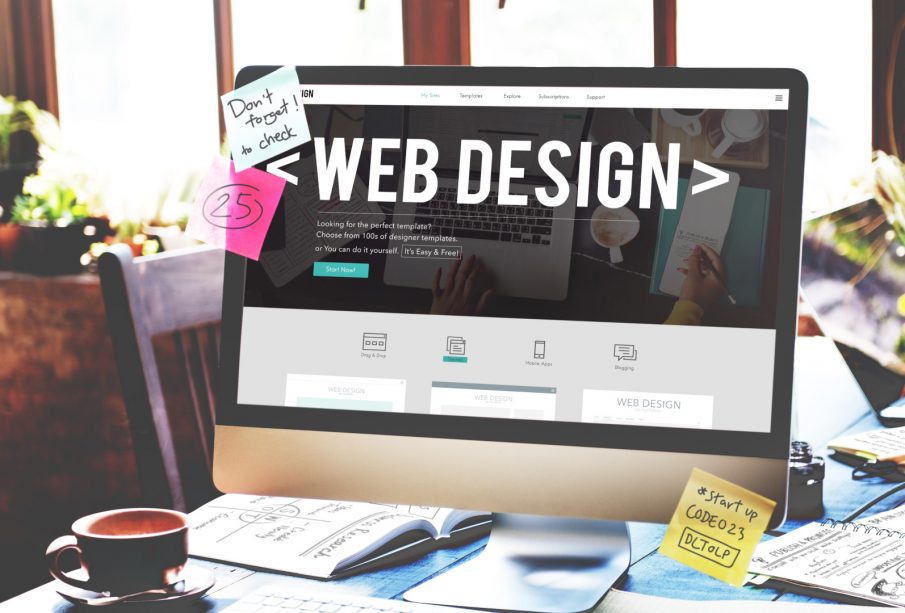
THE PRINCIPLES OF DESIGN AND THEIR IMPORTANCE
About a dozen design principles are beginning, and experienced designers should be aware of them when creating their projects. A dozen or more “secondary” design principles are often included in the Gestalt Principles and typography. Below are the main design principles, with illustrations.
The Basic Principles of Visual Design
There needs to be consensus among designers about the most important design principles. The following 12 principles of visual design are the most frequently mentioned in books and articles on the subject.
Contrast
Clients who feel that a design should “pop” more are common complaints for designers. Although it may sound arbitrary, the client usually means that there is more contrast in the design.
Contrast is the ratio of elements in a design to each other, especially adjacent elements. This makes different parts stand out. Also, contrast is a crucial aspect of creating an accessible format. Contrast can make text content challenging to read for those with visual impairments, particularly for those with low vision.
Balance
All design elements and principles–typography, colors, images, shapes, patterns, etc.–carry a visual weight. Some features draw the eye, while others are more subtle. These elements should be placed on a page to create a sense of balance.
There are two types of balance, asymmetrical and symmetrical. Symmetrical designs place equal-weight elements on either side of an imaginary center line. Asymmetrical balance is a combination of factors with different weights. These are often placed in relation to a line outside the overall design.
Accentuation
Emphasis refers to the elements of a design intended to stand out. This is the most important information that the design should convey.
You can also use emphasis to decrease the impact of some information. This is especially true when “fine print” is used to provide ancillary information. The tiny typography at the bottom of a webpage is much lighter than any other information in a design and should therefore be deemphasized.
Proportion
One of the most basic principles of graphic design is proportion. It’s simply the ratio of different elements to each other. The proportions indicate what’s important and what’s not in a design. Larger elements are greater, while smaller elements are less important.
Hierarchy
Hierarchy, another design principle, directly refers to the ease with which visitors to a website can process content. This refers to the importance and relationships between elements in a design. The most important elements or content should be.
Using headings and titles in a design is a great way to illustrate hierarchy. The page title should be the most important. It should also be easily recognizable as the page’s most important element. It is important to format subheadings and headings in a way that demonstrates their importance relative to one another, as well as the title and body copy.
Repetition
It is a great way of strengthening an idea. Repetition is also a great way of unifying a design that combines many elements. You can use repetition in many ways. For example, you could repeat the same colors, fonts, shapes, or other elements of a design.
For example, this article uses repetition in the formatting of the headings. Each design principle in this section is the same, signaling that they are all equally important and related. Consistent headings unify these elements.
Rhythm
Spaces between repeating elements can create a sense of rhythm. This is similar to how the spaces between notes in a musical composition create rhythm. Designers can create five types of visual rhythm: regular, regular, alternating, and flowing.
Random rhythms have no discernable pattern. Regular rhythms have the same spacing between elements with no variation. Alternating rhythms follow the same pattern, but there are variations between elements (such as a 1-2-3-1-1-2-3 pattern). Flow rhythms follow curves and bend like waves flowing or dunes moving. Each iteration of progressive rhythms adds to the previous one.
You can use rhythms to create many feelings. They can create excitement, particularly progressive rhythms or reassurance, and consistency. How they are used will determine how effective they are.
The Pattern
Patterns are simply a repetition of several design elements that work together. Wallpaper patterns are the most common example of patterns that almost everyone knows.
However, patterns can also be used to describe design standards that govern how elements are created. Top navigation, for example, is a design pattern most internet users have used.
White Space
White space, also known as “negative space,” is an area of a design without any design elements. This is effectively space.
Many designers begin to feel that every pixel needs to be filled with some design and neglect the importance of white space. White space is important in design. It allows elements to breathe. A design’s specific content or parts can be highlighted by negative space.
It can make certain elements of a design more easily identifiable. Because negative space around lowercase letters is more varied, typography becomes easier to read.
Sometimes, negative space can be used to create secondary images which may not immediately be apparent to the viewer. This is a great way to delight customers. For example, take the FedEx logo’s hidden arrow.
Movement
The eye moves over a design in movement. The most significant element should be the most important, and vice versa. This can be done by positioning (the eye naturally falls upon certain areas of a design), emphasis, or other design elements.
Variety
To create visual interest, variety in design is important. A design lacking variety can quickly become boring, leading to a loss of interest. You can create variety using color, typography, and images.
But, it is not a good idea to have too much variety. To improve a user’s experience, variety should be used in conjunction with the other design elements.
Unity
Everybody has seen websites or other designs that just slapped elements onto a page without regard for how they fit together. Newspaper ads using ten different fonts are a common sight.
Unity is the ability to connect all elements in a design. A design should be clear in its relationships between visual elements. Unity is also important to ensure that concepts are communicated clearly and in a cohesive manner. Design with unity is more effective and has higher authority and quality than designs without it.
Design Principles Other
In various articles, other principles of design are also covered. These include color, Gestalt Principles, and typography. While some are definitely “principles”, others more closely resemble design elements.
Typography is the arrangement of text in a design. This includes fonts used, the size and weight of the fonts, and how different elements relate to one another. A good typographic design will be heavily influenced by the design principles discussed earlier in this article.
Designing with color is one of a design’s most important psychological aspects. It has a significant impact on user experience. The theory and color psychology heavily influence some of the principles discussed earlier.
Gestalt Principles are similarity, continuity, closure, closeness, figure/ground, symmetry & or (also known as pregnancy). These principles may be closely related to those mentioned previously.
Alignment and grid are closely linked to balance. They refer to how elements are placed on an invisible grid.
Framing is how the main subject of a design appears in other elements. This is most commonly used in cinematography and photography. It refers to how the main subject of an image is placed within its overall image. The principle can also be applied to design.
Design is also heavily influenced by the shape, the specific shapes used, and the overall design. Different shapes can create different emotions. For example, circles can be organic and fluid, while squares can be more rigid and formal. Triangles, on the other hand, can give off energy and movement.
These design principles or elements are essential aspects of good design. They should be considered in conjunction with the other fundamental principles to ensure the best user experience.
Conclusion
It is open to debate what constitutes the “basic principles” of design. However, understanding and implementing these principles is crucial to any successful design project.
Designers need to see how each design principle impacts their work. It is a great way to learn how to design better designs by studying the work of other designers.
You can be an expert in these design elements or principles to make a good design. It’s usually done with “designer’s intuition”. This may require a lot more trial and error to get the right design. The principles discussed could be used to save designers time and energy.







